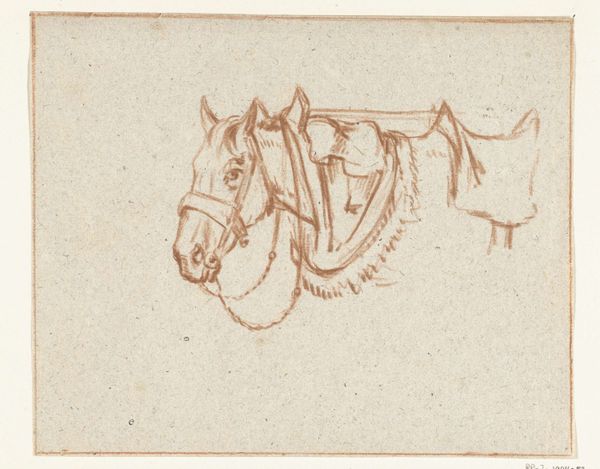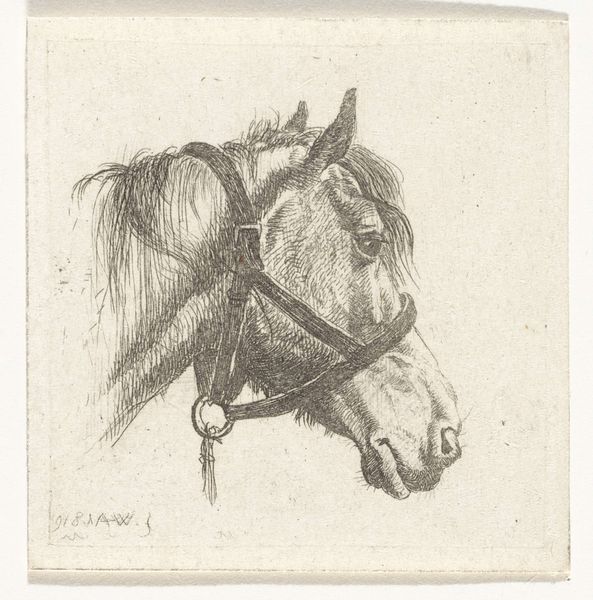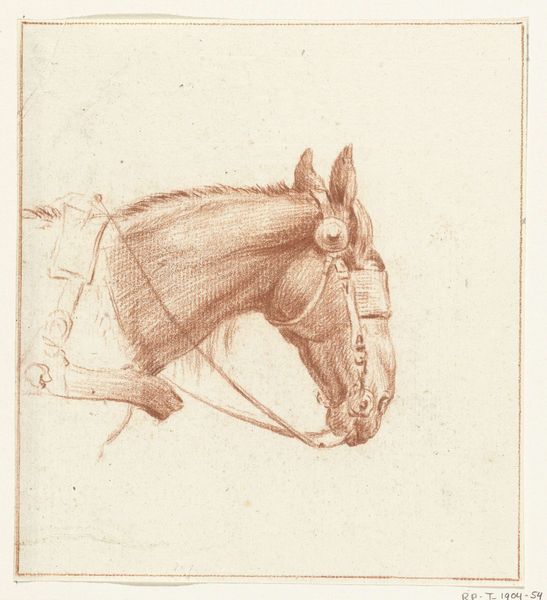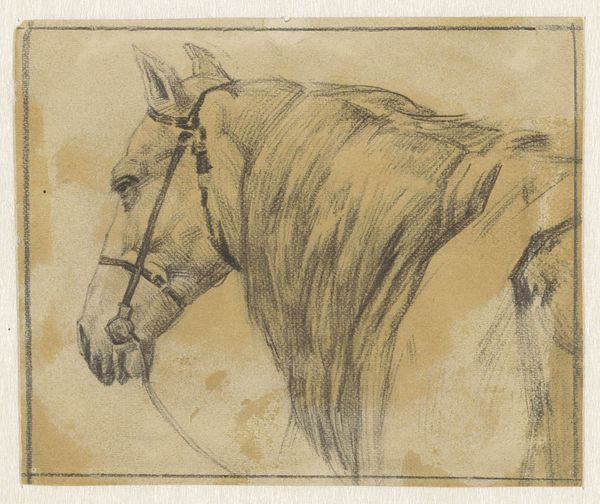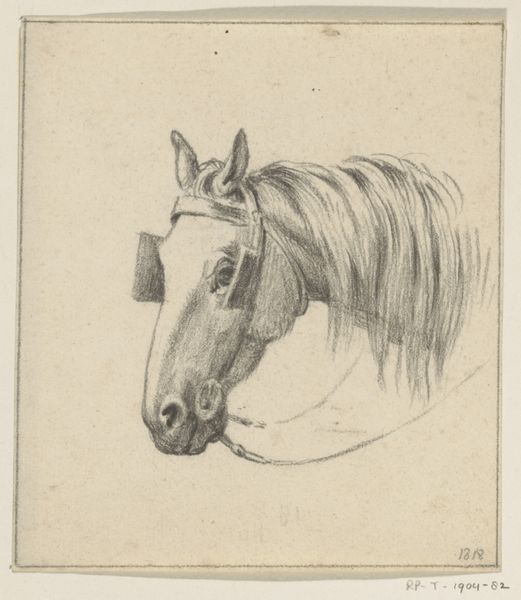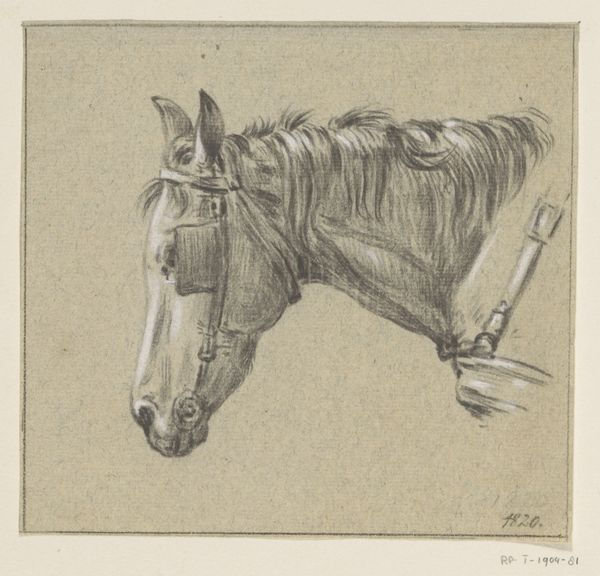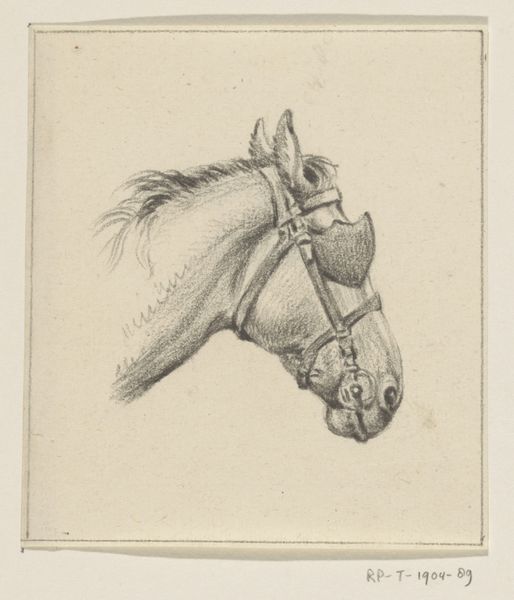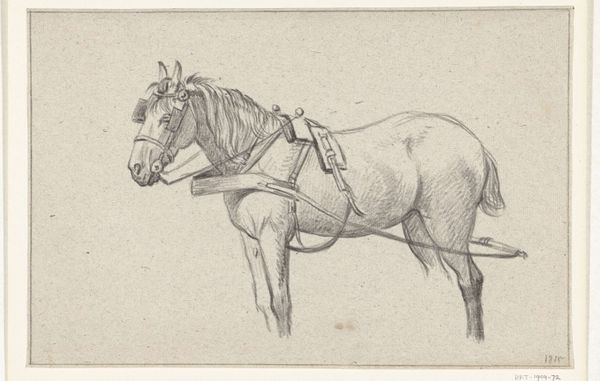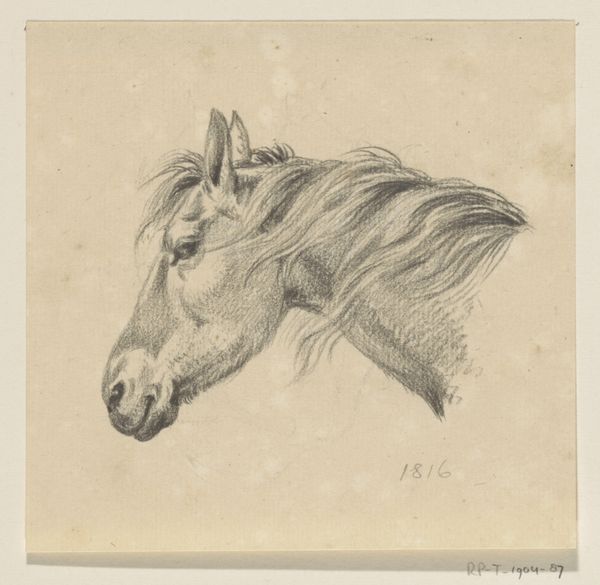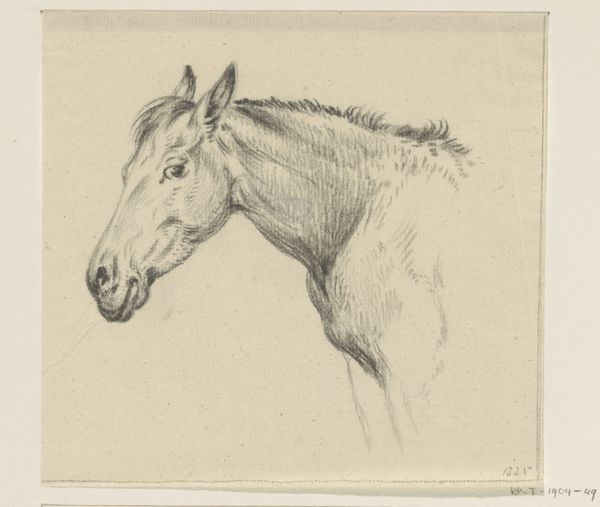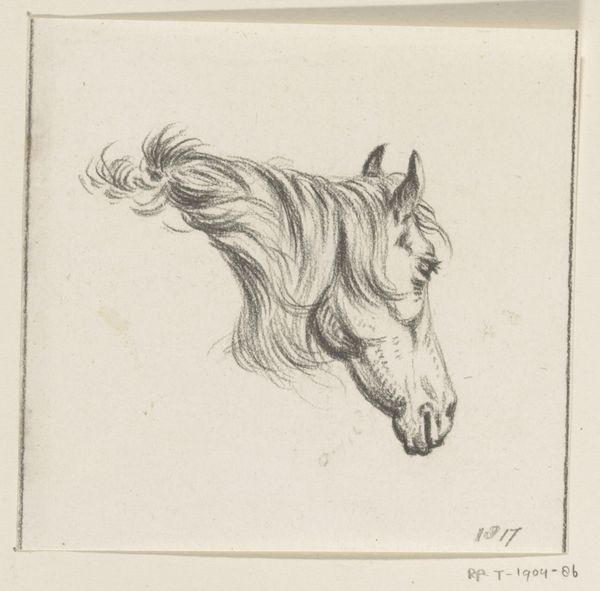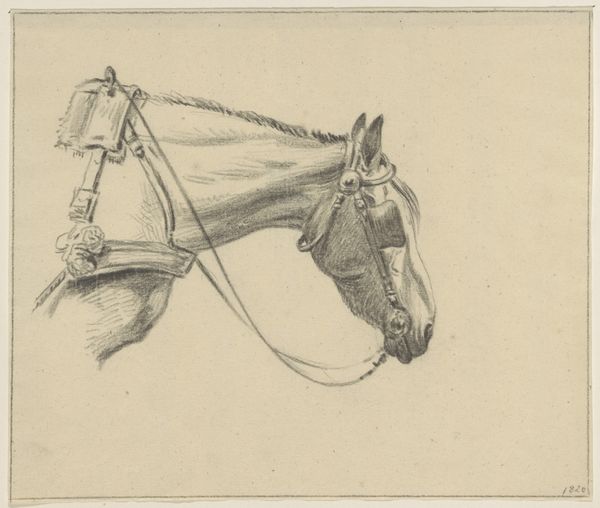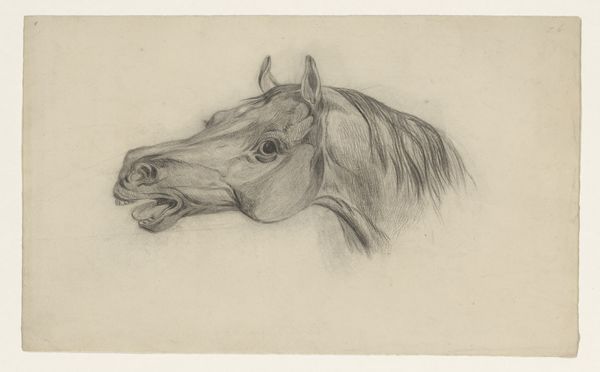
drawing, pencil
#
drawing
#
landscape
#
etching
#
figuration
#
romanticism
#
pencil
#
horse
Dimensions: height 140 mm, width 163 mm
Copyright: Rijks Museum: Open Domain
Editor: Here we have Jean Bernard's "Head of a Caparisoned Horse, Facing Left," made around 1815, using pencil and etching. It's surprisingly spare. It’s a head, barely anything else. What strikes you most about this piece? Curator: The material limitations themselves. Consider the cost of pigments in 1815. A drawing like this, using pencil and etching – readily available, inexpensive – speaks volumes about access to resources. Notice how the artist meticulously renders the horse's tack, almost fetishizing the leather and metal. It's about labour and its marks. Editor: Labour? I mostly see the horse itself, though the tack is rendered meticulously as you said. Curator: Exactly! But how was that tack made? Who tanned the leather, forged the metal? Bernard draws our eye to the artifacts *of* labour rather than erasing them. Think about the Romantic era obsession with the "natural." Is this horse presented "naturally," or is it adorned, subjugated, placed into service? And, by extension, aren't these artistic choices shaped by class structures? Editor: I never thought of it that way before – more about class and labor than about, well, a horse. So, you are less concerned with the "artistic intention" and more with… societal forces? Curator: Precisely. Consider this artwork a document of material culture. A visual record of production, consumption, and the systems that bind them. Editor: So looking beyond the surface reveals the history and production behind the image. Curator: It reminds us that even simple sketches hold material significance beyond just representation.
Comments
No comments
Be the first to comment and join the conversation on the ultimate creative platform.
